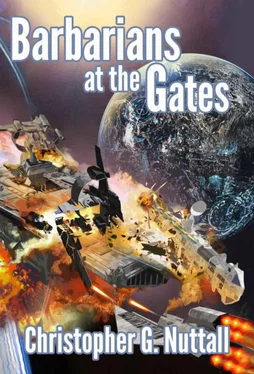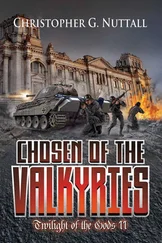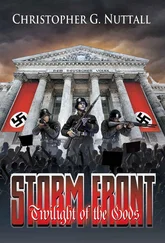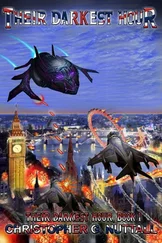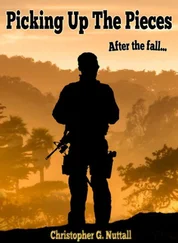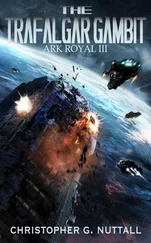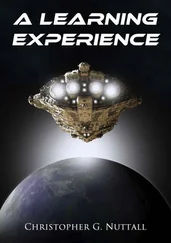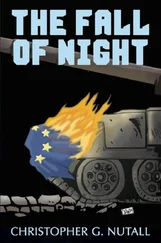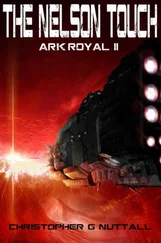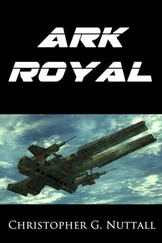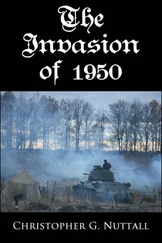Marius ruminated on this for a minute. “Thanks for talking with me. I’ll keep all this in mind, I promise.”
“Just watch your back, all right?” Kratman pleaded. “I’ve seen far too many of my old officers and men taken out by Justinian—and his allies—as it is.”
* * *
Tired and emotionally drained, Roman Garibaldi staggered out of the Examination Hall hours after he’d entered. It felt as if he’d been in the room for years, as if his personal universe had shrunk down to the examination room and the terminal he’d used to answer the questions. All hope of a First had faded, to be replaced by the desperate hope that he might just have scraped a Third. A Fourth or below usually meant repeating the fifth-year at the Academy, though Roman wasn’t sure if that still applied in wartime. He returned to his room, collapsed into bed and fell asleep.
Hours later, he awoke, ordered a small meal from the food processor, and then fell back asleep after eating it. He felt at loose ends; now that the exams had been completed, he had to wait until the proctors had completed reviewing their answers. All that mattered was passing the exams.
He tried to keep the thoughts of war from his mind, but he just couldn’t. Would doing worse on his exams mean he’d be sent immediately to the front? Or would he be kept back as an incompetent?
The following morning, he was awakened at the usual time and ordered to report to the Assembly Hall. He wasn’t the only one, as he noticed almost all of his fifth-year class had been summoned.
As he and the others poured into the compartment, he saw holographic test results hovering in front of his eyes. There were no Fourth or Fifth results, he noted at once; the unlucky cadets would probably be spared public humiliation. He scanned the Thirds and saw a couple of familiar names, but his was missing.
Bracing himself, he scanned the Seconds, yet his own name wasn’t present. Thank goodness!
Taking a deep breath, he looked at the Firsts and saw, clearly, ROMAN GARIBALDI. He’d done it!
Friends shook his hand or hugged him, eager to share their congratulations, or demanding to know where he was going. He accessed his implants and searched for his orders. They were waiting for him in the network.
“ Enterprise ,” he said in delight. The Federation Navy’s latest flagship had been his first choice, although he’d known that even with a First, the odds weren’t high. “I’m going to the Enterprise !”
“Congratulations,” Cadet Sultana Narayanan said. Her accented voice was amused. “So am I.”
Roman grabbed her and pulled her into a hug. At least he wouldn’t be completely friendless when he arrived. Between them, he was sure they could learn the carrier’s ways and fit right in. He barely heard the speech from the proctors, warning the non-First cadets that their orders were still being cut and that they’d be informed as soon as possible. He was going to the Enterprise !
“Come on,” Raistlin said. All differences between them had faded, for Raistlin had made a First, too. “Let’s party!”
The Federation Navy’s standard doctrine for building and deploying carriers was developed during the First Interstellar War and refined over the following centuries. It should therefore be asked, loudly, why that doctrine was ignored when it came to building the Star Carrier designs.
-
An Irreverent Guide to the Federation , 4000 A.D.
FNS Enterprise , Sol System, 4092
“We’re coming up on her now,” the pilot said in a bored tone, sounding as if he’d flown the mission hundreds of times before. “You may wish to come forward and watch as we approach.”
Roman wondered how the pilot could be bored—wasn’t the Enterprise the most famous ship in the Navy?—but accepted his invitation with alacrity, even though it was against regulations. There should have been a second pilot in the cockpit, but all kinds of safety rules were being violated in the desperate struggle to prepare the Retribution Force for its mission. He settled into the spare seat and watched as the carrier slowly came into view. He’d seen images, of course, long before the war when he’d prepared his request for assignment, but the image didn’t even come close to the reality. A civilian might have regarded the huge carrier as ugly, yet Roman saw the Enterprise as beautiful, form melded with function in a way he found nearly impossible to describe.
Seen from their approach position, the carrier looked like a flattened cylinder, surrounded by launch and recovery tubes for her ten wings of starfighters. A pair of starfighters swooped down towards the shuttle, passing close enough for him to track them, before wagging their wings and flashing off into the great darkness. If the shuttle’s IFF codes hadn’t checked out, Roman was certain their welcome would be a great deal less friendly. The entire Solar System was still jumpy after the Battle of Earth.
The shuttle altered course, heading towards one of the rear landing decks; Roman gasped as he took in the mammoth drive units at the rear of the ship. Each of the drives—there were no less than eight placed around the massive cylinder—could provide a realspace velocity of 0.8C, even if the other drive units had been disabled. No other starship in the Federation Navy, even a superdreadnaught, could soak up so much damage and keep going. As the shuttle swept towards the landing deck, he saw the point defense blisters and missile tubes that gave the carrier her offensive and defensive punch. If necessary, Enterprise could go toe-to-toe with a superdreadnaught.
There had always been an Enterprise in the Federation Navy, even before there had been a Federation Navy. USS Enterprise had served as the flagship of the multinational task force that had stopped the Snakes at the Battle of Century, back during the First Interstellar War. She’d been lost the following year at the Second Battle of Ramadan, but by then she’d created a legend. FNS Enterprise , the first starship built specifically for the Federation Navy, had led the fleet that liberated Zion and gone on to serve in all of the remaining battles of the First Interstellar War. Since then, the name had been passed down the ages, even during the Inheritance Wars. The war that had threatened to tear the Federation asunder had seen the odd spectacle of ships called Enterprise fighting on both sides of the war. And there were those who believed that the First Battle of Sapphire would have gone the other way if the last carrier to bear the name had taken part in the fighting.
The shuttle passed through the force field around the carrier and set down on the landing deck. Roman didn’t have to be told to grab his holdall; he did so and headed over to the hatch, ready to disembark just as soon as it hissed open. The carrier’s internal atmosphere struck him the moment he stepped out of the shuttle with Sultana Narayanan hot on his heels. The Enterprise was clearly a ship that was frantically preparing for war. A handful of shuttles were scattered on the deck, while a pair of starfighters were being disassembled by the landing deck crew.
He felt the thrumming of the carrier’s drives echoing through the deck as he hastened to the secondary hatch. They’d been warned not to remain on the landing deck for any longer than strictly necessary, and with all the activity he’d seen thus far, he could easily see why.
Once the airlock cycled, he saw an older woman wearing a commander’s uniform waiting for him. His implant had been loaded with a complete crew manifest for Enterprise , but he would have recognized Commander Rosemary Duggan without it. She was a tall woman with short, dark hair and a grim, bulldog expression. She wore her uniform as if it were a weapon with which to beat her foes to death whenever her captain might command. As the XO of the Enterprise , she was God, as far as her subordinates were concerned.
Читать дальше
